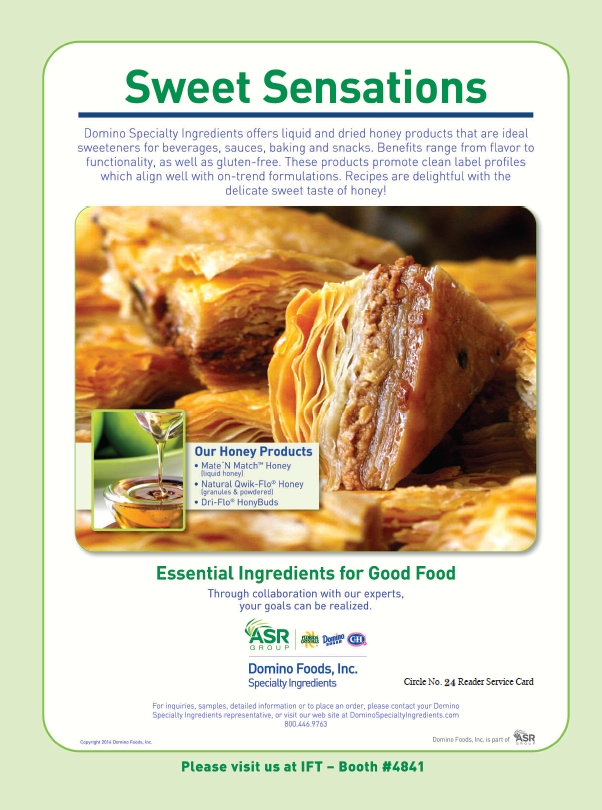Suppliers and manufacturers understand that a supplement is useless if it fails to effectively deliver nutrients to the body. Companies want the best way to increase the bioavailability of some nutrients, like omega-3s and probiotics, and are turning to microencapsulation.
Let’s take a closer look at this important technique, including how it can be best applied and how microencapsulation improves the ingredient.
How it Works
Microencapsulation is the process of enveloping vitamins, nutrients or botanical particles in an outer coating to protect them from the environment, both outside and inside the body. These environmental dangers, such as heat, light, gastric pH, mechanical stress and interaction with other ingredients, can affect the potency and efficacy of the end product. The outer coating can be made of a variety of materials, such as gums, carbohydrates like starch, lipids, cellulose or proteins like gelatin. Which coating material is best to use depends on how stable the core material needs to be, the desired thickness of the coating and which material or nutrient it will be coating.
Kathy Lund, vice president of business  development and marketing for AIDP, City of Industry, CA, says that her company’s coatings for microbeadlets are starch-based and “free from undesirable animal-based gelatins, preservatives, antioxidants and genetically modified ingredients,” which allows for those following a vegetarian, Kosher, Halal or other specific diet to still take the supplement.
development and marketing for AIDP, City of Industry, CA, says that her company’s coatings for microbeadlets are starch-based and “free from undesirable animal-based gelatins, preservatives, antioxidants and genetically modified ingredients,” which allows for those following a vegetarian, Kosher, Halal or other specific diet to still take the supplement.
There is more than one kind of microencapsulation, says Doug Lynch, vice president of business development for Lycored, Orange, NJ. “We offer multiple technologies, including fluid bed coating, spray drying and creation of beadlets (alginate, starch and gelatin),” Lynch says. The main point of the process, he says, is to “confer certain processing benefits to the raw material.”
The Benefits
Taste. One important benefit of microencapsulation is taste-masking. “Many of these important ingredients tend to taste awful,” admits Sam Wright, IV, CEO of The Wright Group, Crowley, LA. As retailers and consumers alike know, it doesn’t matter how “good for you” a product is if the off-putting taste prevents people from taking it! “Microencapsulation permits these ingredients to ‘play well with others,’” says Wright. Botanicals, amino acids and oils are examples of supplements that would benefit from the taste-masking feature of microencapsulation, Wright adds.
Fish oils and other oily materials are good candidates for microencapsulation as the process can convert them into a fine powder, says Wright, allowing them to be used in finished products, like gummies, that are easier to take than big, fishy-tasting capsules.
Form. Gummies aren’t the only possible end-product for microencapsulated materials. The process allows for nutrients to take many different forms, even outside of tablets or chewables. “We have developed food formulations,” says Lynch, explaining that they can add nutrients to beverages such as waters, juices and smoothies, as well as “cereals, confection, infant and dairy or non-dairy applications.” These kinds of delivery systems are also useful to “older consumers since their ability to swallow tablets and capsules has become a problem,” says Wright.
Shelf life. Another major benefit of protecting nutrients from the environment is a longer shelf life and increased stability, a plus not only for the consumer, but also for the supplier. “For supplements or functional ingredients, microencapsulation can add stability in tableting or extend shelf life, thereby reducing overages needed and providing cost savings,” explains Lund. Overages are the amount of a product that has been added above the labeled amount to compensate for the loss of potency or product disintegration. They are included, at a cost, so that the potency of the product at the end of its shelf life matches that on the label. Microencapsulation minimizes this need, “which is critical for formulary or regulatory concerns that limit adding actives above the label claim,” says Lynch.
Stability. Bérengère Feuz, marketing group manager of Lallemand Health Solutions, Montreal, Canada, says her company specializes in microencapsulation for probiotics as they are “special and fragile ingredients.” Her company has developed a special microencapsulation technology for probiotics, involving “freeze-dried particles of live bacteria in a fluidized air-bed device.” Each particle, she says, consists of a microbead that contains hundreds of dormant bacteria coated with a lipid-based layer that protects the bacteria from physical and chemical stresses.
Microencapsulated probiotics, according to Feuz, have close to a 100% survival rate after up to seven hours at 50° C (122° F), 1,000 times better resistance to pH 1.5 (that of stomach acid) and twice the survival rate after compression than non-microencapsulated bacteria. “Such a technology has helped broaden the applications and usage of probiotics, offering longer shelf life or room temperature storage, for example,” explains Feuz. However, she cautions that it is no “magic bullet” and that a poor-quality probiotic (or any ingredient, for that matter) cannot be saved by microencapsulation.
Advancements
Suppliers continue to find new ways to improve upon the process and apply the technique to different product formats. Lund says her company’s process “removes all previous barriers for clear beverage and nutraceutical applications, such as cloudiness, clumping, fragility, bioavailability and dispersion.” Wright mentions that his company has been working on more sophisticated processes to enable oil-based nutrients in clear solutions, as well. With the promise of this technology, look for more advancements to be introduced in the near future. WF
Published in WholeFoods Magazine, June 2014









